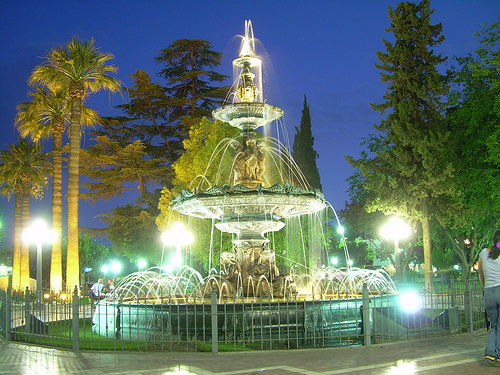The Department of Maipú was established on 14 May 1858, by a decree of the Governor Juan Cornelio Moyano, who received the General Captaincy- of Chile, the Royal Merced of Jurisdictions, which the Huarpes Indians used to know as the Tiasta.
He founded a farm there that after his death became property of Captain Don José Moyano Cabral.
Since then, the area began to be named Potreros de Cabral and there was built an important post known as Rodeo del Medio.
In this area, the Jesuits built the Barrancas and the Nuestra Señora de las Merceds Chapel in Cruz de Piedra, which ceased operations in 1855 because it was already very old and deteriorated. The action of Nicolas de Ozamis enabled the reconstruction of the oratory, a work that was later continued by his son, José Alberto de Ozamis.
In a scattered way there settled nearly thirty-eight families in the area of Cruz de Piedra, and over time it became the richest wine industry zone of Argentina.
On January 9, 1855 before the imperative need to identify the boundaries of the new town, the governor of the province Pedro Pascual Segura issued a law decree which established the geographic perimetre of the future Department of Maipú, called at that time Department 70 de Campana. However, three months later, when the departments of Lujan and San Vincente (current Godoy Cruz) were set up, the well-known Department 70 de Campana was locked inside the new departments.
On May 14, 1858, the governor of the province Don Juan Cornelo Moyano, promulgated the law decree which stipulated that the Cruz de Piedra henceforth adopt the name of Maipu, and would have as its head the point where it has been built the new temple, under the name of Villa de Maipú.
Subsequently, on April 18, 1884, the Barrancas district was annexed, hitherto belonging to San Martín.






